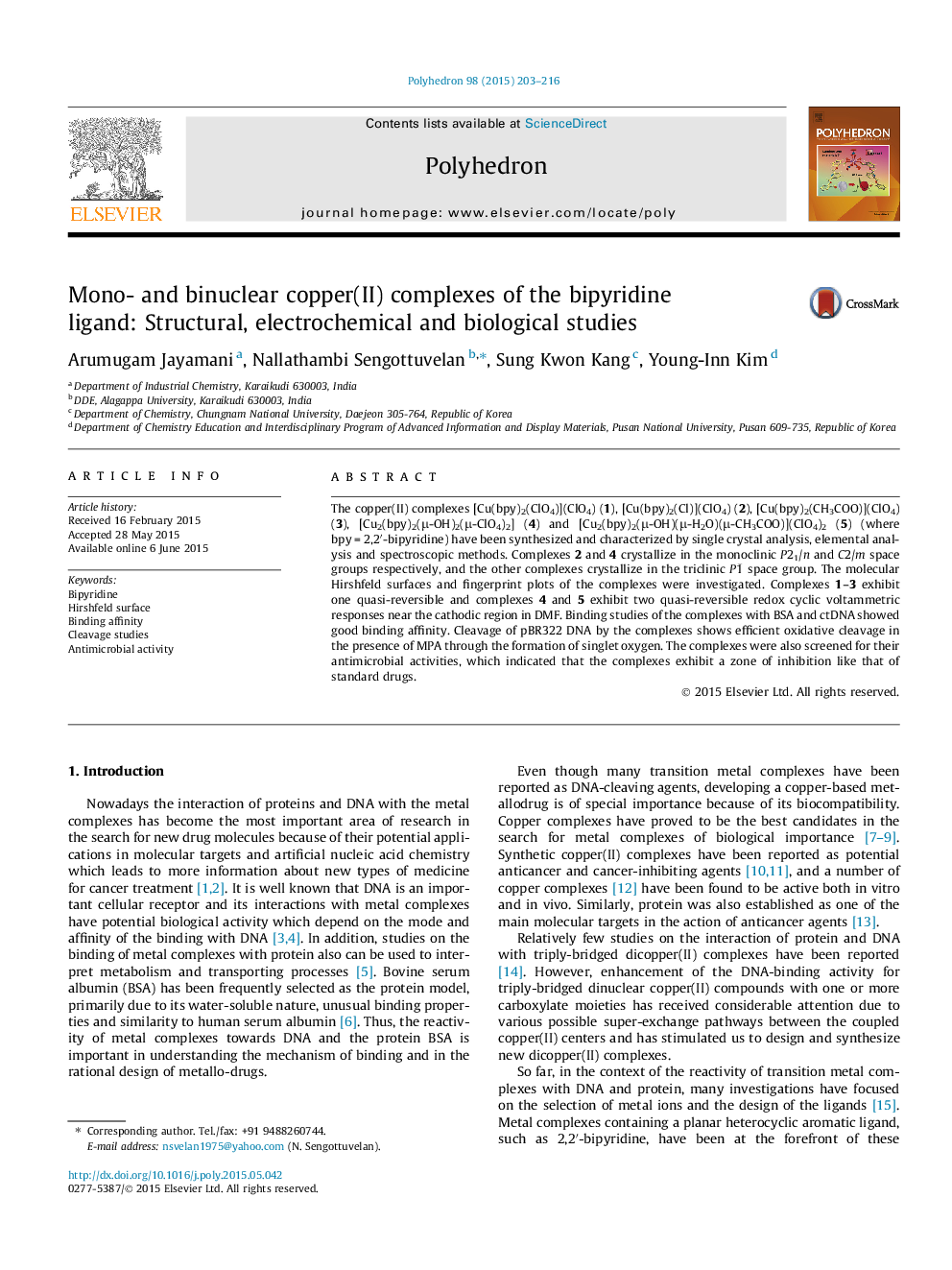| Article ID | Journal | Published Year | Pages | File Type |
|---|---|---|---|---|
| 1334359 | Polyhedron | 2015 | 14 Pages |
The copper(II) complexes [Cu(bpy)2(ClO4)](ClO4) (1), [Cu(bpy)2(Cl)](ClO4) (2), [Cu(bpy)2(CH3COO)](ClO4) (3), [Cu2(bpy)2(μ-OH)2(μ-ClO4)2] (4) and [Cu2(bpy)2(μ-OH)(μ-H2O)(μ-CH3COO)](ClO4)2 (5) (where bpy = 2,2′-bipyridine) have been synthesized and characterized by single crystal analysis, elemental analysis and spectroscopic methods. Complexes 2 and 4 crystallize in the monoclinic P21/n and C2/m space groups respectively, and the other complexes crystallize in the triclinic P1¯ space group. The molecular Hirshfeld surfaces and fingerprint plots of the complexes were investigated. Complexes 1–3 exhibit one quasi-reversible and complexes 4 and 5 exhibit two quasi-reversible redox cyclic voltammetric responses near the cathodic region in DMF. Binding studies of the complexes with BSA and ctDNA showed good binding affinity. Cleavage of pBR322 DNA by the complexes shows efficient oxidative cleavage in the presence of MPA through the formation of singlet oxygen. The complexes were also screened for their antimicrobial activities, which indicated that the complexes exhibit a zone of inhibition like that of standard drugs.
Graphical abstractSingle crystals of five copper(II) complexes have been synthesized and characterized. The molecular Hirshfeld surfaces and fingerprint plots of the complexes were investigated. The complexes have efficient DNA and protein binding properties, showing oxidative cleavage by a singlet oxygen mechanism and better antimicrobial activity.Figure optionsDownload full-size imageDownload as PowerPoint slide
